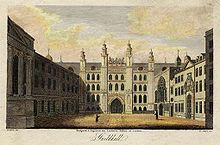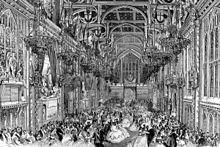The Susie Zone - Exploring Guildhall (March 2018)
Exploring Guildhall, City of London
by Susie J. Briscoe
This is #3 in my series, in which we explore places where I have personal experience. Once again, we remain in the city of London, at a familiar landmark: Guildhall, a Grade 1-listed building which can be dated back to 1396.
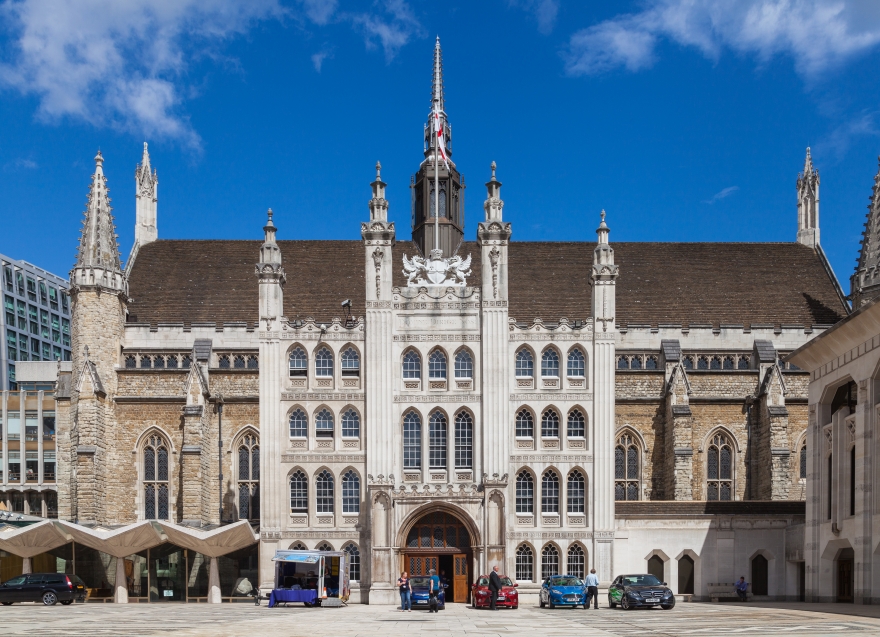
Guildhall hosts many events throughout the year, the most notable one being the Lord Mayor’s Banquet, which is held in honour of the immediate-past Lord Mayor and is the first to be hosted by the new Lord Mayor of the City of London. In keeping with tradition, it is at this Banquet that the Prime Minister makes a major World Affairs speech.
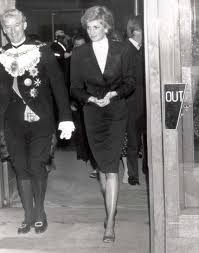 On a personal note, this is where I had the honour of being created a Freeman of the City of London, being sponsored by two Lord Mayors of London: one past – Sir Greville Spratt 1987; and one in post – Sir Christopher Collett, 1988.
On a personal note, this is where I had the honour of being created a Freeman of the City of London, being sponsored by two Lord Mayors of London: one past – Sir Greville Spratt 1987; and one in post – Sir Christopher Collett, 1988.
We had a special private occasion in the Chamberlain’s Court, and the ceremony was conducted by the Chamberlain, himself, who performed the ceremony wearing the traditional ermine-trimmed gown. We were escorted to the Court by the Beadle, who wears a top hat and frockcoat.
 The Clerk of the Court wears a silk gown, and the senior judge at the Royal Courts who is called the Queen's Remembrancer was also present for my ceremony because, as I have said, I was sponsored by two Lord Mayors.
The Clerk of the Court wears a silk gown, and the senior judge at the Royal Courts who is called the Queen's Remembrancer was also present for my ceremony because, as I have said, I was sponsored by two Lord Mayors.
The prospective Freeman is invited to read the ‘Declaration of a Freeman’ and to sign the Freeman’s Declaration Book.
The Copy of the Freedom – a parchment document with the name of the recipient beautifully inscribed by a calligrapher – is presented by the Clerk, together with a copy of the ‘Rules for the Conduct of Life’ which date from the mid-18th century. The Chamberlain extends the right hand of fellowship to the recipient and greets them as ‘a Citizen of London’.
After the ceremony, there is time for informal questions, the opportunity to view interesting items, photographs and artifacts in the Court Room such as a letter from Nelson and Florence Nightingale’s Freedom casket.
We celebrated with the Officers of the Court, taking a toast of sherry and after the ceremony we retired to have lunch at the In-House restaurant. The Remembrancer commented that they couldn’t remember when they had had the pleasure of celebrating in this way (as it was the original way for these ceremonies to take place, Sir Christopher had the honour of being the 800th Lord Mayor of London, and his choice was to establish The 800th Charitable Awards during his year and I’m so happy to say I served on a couple of his charity committees during his year of office.)
It was during Lord Mayor Sir Christopher Collet’s term of office that the late Prime Minister Margaret Thatcher was awarded the Freeman of the City, and I had the honour of being in the Mayoral Party as one of their private guests. As you can imagine, this was another very memorable day, especially as it came so hot on the heels of my own ceremony.
Working on a voluntary basis with ‘my’ third Lord Mayor, Sir Hugh Bidwell, one of the events I assisted with was “1690-1990 300 Years of Dance Music” at Guildhall, City of London, and was yet again another memorable evening where we raised a huge sum of money for his chosen charity CRISIS – a homeless charity.
So now, back to the historical facts...
Guildhall is situated off Gresham and Basinghall streets within the Square Mile known as the City of London, in the wards of Bassishaw and Cheap. The building has been used as a town hall for several hundred years and is still the ceremonial and administrative centre of the City of London and its Corporation. It should not be confused with London's City Hall, the administrative centre for Greater London. The term "Guildhall" refers both to the whole building and to its main room, which is a medieval great hall. The building is traditionally referred to as Guildhall, never "the" Guildhall.
Roman, Saxon and Medieval
The great hall is believed to be on a site of an earlier Guildhall (one possible derivation for the word "guildhall" is the Anglo-Saxon "gild", meaning payment, with a "gild-hall" being where citizens would pay their taxes). Possible evidence for this derivation may be in a reference to John Parker, the sergeant of "Camera Guyhalde", London, in 1396.

During the Roman period, it was the site of an amphitheatre, the largest in Britannia, partial remains of which are on public display in the basement of Guildhall Art Gallery and the outline of whose arena is marked with a black circle on the paving of the courtyard in front of the hall. Indeed, the siting of the Saxon Guildhall here was probably due to the amphitheatre's remains.
Excavations by MOLAS in 2000 at the entrance to Guildhall Yard exposed remains of the great 13th-century gatehouse built directly over the southern entrance to the Roman amphitheatre, which raises the possibility that enough of the Roman structure survived to influence the siting not only of the gatehouse and Guildhall itself but also of the church of St Lawrence Jewry whose strange alignment may shadow the elliptical form of the amphitheatre beneath. The first documentary reference to a London Guildhall is dated 1128 and the current hall's west crypt may be part of a late-13th century building.
Legend describes the Guildhall site as being the location of the palace of Brutus of Troy, who according to Geoffrey of Monmouth's Historia Regum Britanniae (1136) is said to have founded a city on the banks of the River Thames, known as Troia Nova, or New Troy.
1411 - present
The current building began construction in 1411 and completed in 1440, and it is the only non-ecclesiastical stone building in the City to have survived through to the present day.
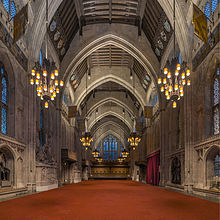 The complex contains several other historic interiors besides the hall, including the large medieval crypts, the old library, and the print room, all of which are now used as function rooms.
The complex contains several other historic interiors besides the hall, including the large medieval crypts, the old library, and the print room, all of which are now used as function rooms.
Trials in this hall have included those of Anne Askew (Protestant martyr), Henry Howard, Earl of Surrey, Sir Nicholas Throckmorton, Lady Jane Grey, Guildford Dudley, Francis Dereham and Thomas Culpeper (lovers of Catherine Howard), Thomas Cranmer, Henry Peckham, and John Daniel (members of the 1556 Dudley conspiracy), John Felton (Catholic), Roderigo Lopez, Henry Garnet (in connection with the Gunpowder Plot), and Gervase Helwys (in connection with the Overbury plot).
It also played a part in Jack Cade's 1450 rebellion. The 1783 hearing of the infamous Zong case, the outcome of which focused public outrage about the transatlantic slave trade, also took place at Guildhall. On 16 November 1848, the pianist Frédéric Chopin made his last public appearance on a concert platform here.
Guildhall contains memorials to Pitt the Elder, Pitt the Younger, Admiral Lord Nelson, the Duke of Wellington, William Beckford, and Winston Churchill.
|
|
This 1863 gathering at Guildhall was attended by Queen Victoria. |
The Great Hall did not completely escape damage in the Great Fire of London in 1666; it was partially restored (with a flat roof) in 1670. The present grand entrance (the east wing of the south front), in "Hindoostani Gothic", was added in 1788 by George Dance (and restored in 1910). A more extensive restoration than that in 1670 was completed in 1866 by the City of London architect Sir Horace Jones, who added a new timber roof in close keeping with the original. This replacement was destroyed during the Second Great Fire of London on the night of 29/30 December 1940, the result of a Luftwaffe fire-raid. It was replaced in 1954 during works designed by Sir Giles Gilbert Scott.
Present
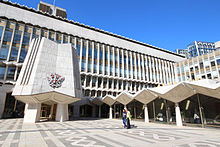 The day-to-day administration of the City of London Corporation is now conducted from modern buildings immediately to the north of Guildhall, but Guildhall itself and the adjacent historic interiors are still used for official functions, and it is open to the public during the annual London Open House weekend.
The day-to-day administration of the City of London Corporation is now conducted from modern buildings immediately to the north of Guildhall, but Guildhall itself and the adjacent historic interiors are still used for official functions, and it is open to the public during the annual London Open House weekend.
Guildhall Art Gallery was added to the complex in the 1990s. Guildhall Library, a public reference library with specialist collections on London, which include material from the 11th century onward, is also housed in the complex. The Clockmakers Museum was previously located at Guildhall but as of 2015 has been relocated to the Science Museum.
The marathon route of the 2012 Summer Olympics passed through Guildhall Yard.
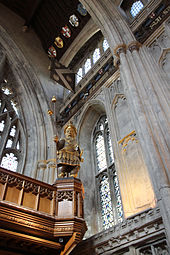 Two giants, Gog and Magog, are associated with Guildhall. Legend has it that the two giants were defeated by Brutus and chained to the gates of his palace on the site of Guildhall. Carvings of Gog and Magog are kept in Guildhall and 7-foot high wicker effigies of them donated by the Worshipful Company of Basketmakers in 2007 lead the procession in the annual Lord Mayor's Show.
Two giants, Gog and Magog, are associated with Guildhall. Legend has it that the two giants were defeated by Brutus and chained to the gates of his palace on the site of Guildhall. Carvings of Gog and Magog are kept in Guildhall and 7-foot high wicker effigies of them donated by the Worshipful Company of Basketmakers in 2007 lead the procession in the annual Lord Mayor's Show.
Early versions of Gog and Magog were destroyed in Guildhall during the Great Fire of London. They were replaced in 1708 by a large pair of wooden statues carved by Captain Richard Saunders. These giants, on whom the current versions are based, lasted for over two hundred years before they were destroyed in the Blitz.
They, in turn, were replaced by a new pair carved by David Evans in 1953 and given to the City of London by Alderman Sir George Wilkinson, who had been Lord Mayor in 1940 at the time of the destruction of the previous versions.
Functions
One of the last acts of the outgoing Lord Mayor is to present prizes at the City of London School prize day at Guildhall. Other events include those of various law firms, award evenings for the Wine and Spirit Education Trust, and the banquet for the International Wine and Spirit Competition.
The Worshipful Company of Carmen holds its Cart-Marking ceremony in the courtyard each July. It is perhaps best known internationally as the ceremonial and administrative centre of the City of London and its Corporation. And, ass you have also learnt, Guildhall also hosts a considerable number of charitable events.
Source: Wikipedia, with additional material by SJB
Don’t forget to share with me what you discovered during this month and let me know if I may share it within this newsletter next month.
